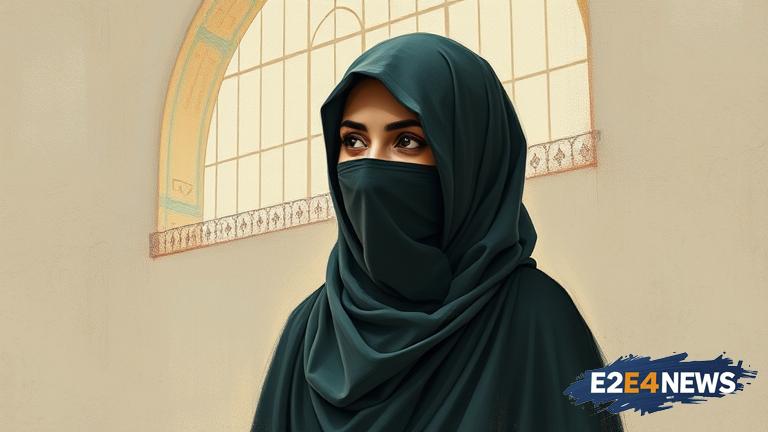The debate surrounding the hijaab has been a longstanding one, with various perspectives and opinions emerging from different quarters. In recent times, the conversation has shifted towards recognizing the hijaab as a personal choice, rather than a restrictive or oppressive practice. This shift in narrative is crucial, as it acknowledges the agency and autonomy of individuals, particularly women, in making decisions about their own bodies and lives. The hijaab, a traditional Islamic headscarf, has been a subject of controversy, with some viewing it as a symbol of modesty and others seeing it as a symbol of oppression. However, for many Muslim women, the hijaab is a personal choice, driven by a desire to connect with their faith and express their identity. It is essential to recognize that the decision to wear the hijaab is not always a simple one, and is often influenced by a complex array of factors, including cultural, social, and personal considerations. Despite the challenges and criticisms that Muslim women who wear the hijaab may face, many remain committed to their choice, citing the sense of empowerment and self-expression that it brings. The importance of respecting individual decisions regarding the hijaab cannot be overstated, as it is a fundamental aspect of human dignity and autonomy. By acknowledging and supporting the right to choose, we can work towards creating a more inclusive and accepting society, where individuals are free to make their own decisions without fear of judgment or reprisal. Furthermore, it is crucial to recognize the diversity of experiences and perspectives within the Muslim community, and to avoid making assumptions or generalizations about individuals based on their choice to wear the hijaab. The hijaab is not a monolithic concept, and its significance and meaning can vary greatly from person to person. In addition, it is essential to address the issue of Islamophobia and discrimination, which can have a profound impact on Muslim women who wear the hijaab. By promoting education, awareness, and understanding, we can work towards breaking down stereotypes and misconceptions, and creating a more just and equitable society. Ultimately, the choice to wear the hijaab is a personal one, and it is essential to respect and support individuals in their decision-making. By doing so, we can promote a culture of acceptance, inclusivity, and respect, where individuals are free to express themselves and live their lives with dignity and autonomy. The conversation surrounding the hijaab is complex and multifaceted, and it is essential to approach it with sensitivity, empathy, and understanding. By listening to the stories and experiences of Muslim women who wear the hijaab, we can gain a deeper understanding of the issues at play, and work towards creating a more just and equitable society. The hijaab is not just a piece of clothing, but a symbol of identity, faith, and culture, and its significance and meaning can vary greatly from person to person. It is essential to recognize and respect this diversity, and to avoid making assumptions or generalizations about individuals based on their choice to wear the hijaab. In conclusion, the hijaab is a personal choice, driven by a complex array of factors, including cultural, social, and personal considerations. By respecting and supporting individual decisions, we can promote a culture of acceptance, inclusivity, and respect, where individuals are free to express themselves and live their lives with dignity and autonomy. The importance of education, awareness, and understanding cannot be overstated, as it is crucial for breaking down stereotypes and misconceptions, and creating a more just and equitable society. By working together, we can create a world where individuals are free to make their own choices, without fear of judgment or reprisal, and where the hijaab is recognized as a symbol of empowerment, self-expression, and personal identity.
